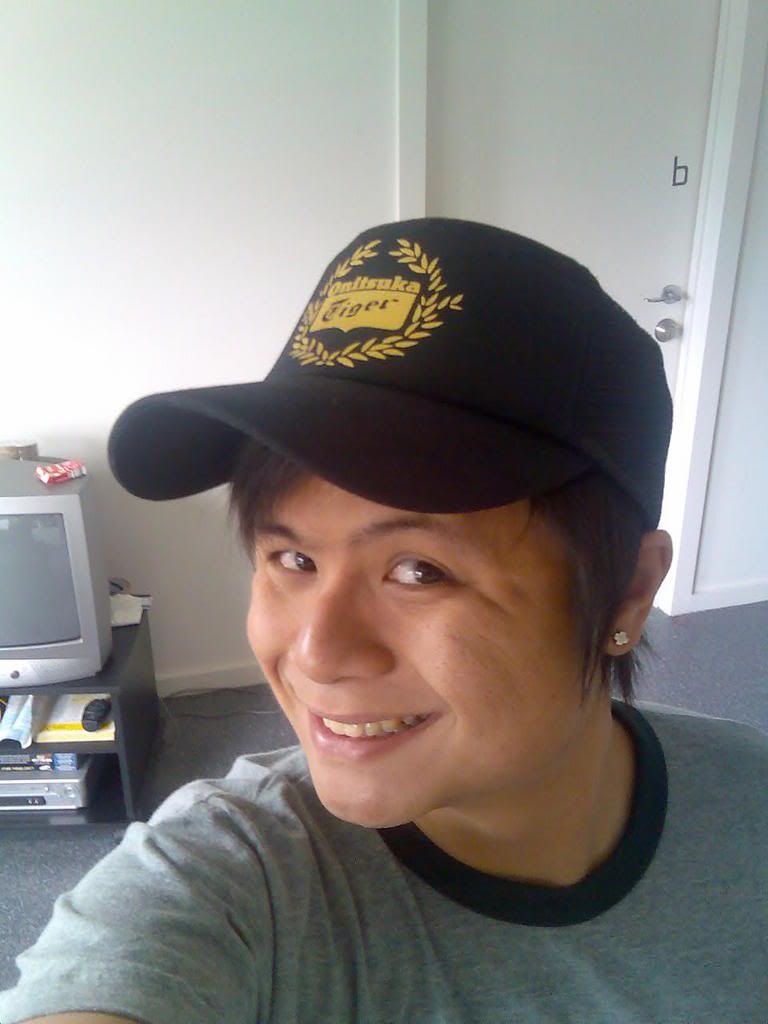
PROFILE

| Name | : | Sin Hon Peow |
| Gender | : | Male |
| Age | : | 24 |
| Zodiac | : | Aries |
PHOTOS
09-03-04 : Seng's Birthday
21-03-04 : Peow's Birthday
15-04-04 : Chilling Out
07-08-04 : BMT Album 01
07-08-04 : BMT Album 02
ARCHIVES
December 2003
January 2004
February 2004
March 2004
April 2004
May 2004
June 2004
July 2004
August 2004
October 2004
November 2004
December 2004
January 2005
February 2005
April 2005
August 2005
September 2005
October 2005
December 2005
January 2006
February 2006
February 2007
August 2007
November 2007
May 2008
June 2008
September 2008
FRIENDS
Angeline
Edmond
Javier
Johnny
He Chi
Hui Jun
Ivan
Kelvin
Sandi
Wee Seng
Wee Siang
Wei Cheng
Xuan Wei
Xianmin
Yox
Zheng Hui
QUT
Cheryl
Joanne
Melody
Ruth
BTPS
Felicia
XueHui
Ying Jian
Dunmanites
Andre
Cheryl Li
Devil-Chris
Elaine
Gim Ann
Guo Wei
Iffah
Jean
Jeffrey
JiaMei
Jia Le
Karen
Kelly
Khairi
Lance
Masie
Mavis
Melvin
Pauline
Rachel Tan
See Jin
Sherman
SiYing
SiQi
Soon Wen
Vanda
Vicnan
Wei Xin
Winnie
Yan Jing
Yi Wen
Yong Zheng
Poly Mates
Ain
Angela
Bennie
Caren
Gui Yuan
JingFang
Malcolm
Nadia
Rina
Stephanie
Suet Ley
Wen Qi
Yong Xin
Zhen Hui
Radio Academy
Julya
Shereena
CAI Section
Forrest
Jason
Louis
30th Modified BMT
Giap
Joel
Syafiq
Friends
Lucille
Ade
CHATTER BOX
Now Playing

August 28, 2007
Eclipse Of The Moon
Saw the eclipse of the moon today ...
Looks like a orange table tennis ball up in the sky ...
Below is the full report of the eclipse :

Most of Eastern Australia will be well placed to witness a total lunar eclipse on the evening of Tuesday, August 28. Mark Rigby, Curator of the Sir Thomas Brisbane Planetarium, explains how to make the most of the event from Brisbane.
No two eclipses are the same and, during some, the Full Moon can take on a lovely reddish colour, although sometimes it may be very dark. A lunar eclipse is well suited to viewing with the unaided eye, although binoculars or a telescope do enhance the view. No particular viewing location is necessary, although the Moon will be low in the eastern sky early in the event.
A lunar eclipse occurs when the Moon passes through the Earth’s shadow. This occurs at Full Moon when the Sun, Earth and Moon are in a straight line when viewed from above the plane of the Solar System. However, at the time of most Full Moons, the Moon usually is just above or below the plane of the Earth’s orbit around the Sun and it therefore misses an encounter with the Earth’s long tapering shadow.
There are two parts to the Earth’s shadow, the outer penumbra and the inner, darker umbra. From within the umbral shadow an observer would see the Sun completely blocked or eclipsed by the Earth. From within the penumbra, part of the Sun would be visible and one would see a partial eclipse of the Sun caused by the Earth.
A total lunar eclipse occurs when the Moon passes through the darker umbra. However, this does not mean that the Moon disappears, as some of the Sun’s light is refracted or bent around the limb (edge) of the Earth and then it faintly illuminates the Moon. Since the blue component of the Sun’s white light is scattered by the Earth’s atmosphere, it is the red component that reaches the Moon and therefore colours the eclipsed Moon. While the eclipsed Moon sometimes can be a noticeable reddish colour, it is sometimes grey or dark brown. The clarity of the Earth’s atmosphere can influence the colour as well, e.g. effects of volcanic dust or smoke from major fires.
On August 28, the Moon will be rising around sunset and will begin entering the penumbra at 5.52 pm. Nothing will be noticeable to the average observer at this time and for observers in western Queensland and in the far north the Moon will not be up, but they will not miss anything.
The real “action” commences at 6.51 pm when the Moon begins to enter the darker umbra and more of the Moon will progressively darken until 7.52 pm when all of the Moon will be in the umbra – the total lunar eclipse phase has then commenced and hopefully some colour will begin to be noticeable during this phase lasting 91 minutes. Mid eclipse will occur at 8.37 pm and totality will end at 9.23 pm. The partial phase will end at about 10.24 pm, when it will look like the eclipse is over. In fact, the Moon is not completely clear of the Earth’s lighter penumbral shadow until about 11.22 pm.
Notice the difference in the illumination on the Moon during the totality. The northern part of the Moon will pass deeper into the Earth’s umbral shadow and will therefore appear darker.
Looks like a orange table tennis ball up in the sky ...
Below is the full report of the eclipse :

Most of Eastern Australia will be well placed to witness a total lunar eclipse on the evening of Tuesday, August 28. Mark Rigby, Curator of the Sir Thomas Brisbane Planetarium, explains how to make the most of the event from Brisbane.
No two eclipses are the same and, during some, the Full Moon can take on a lovely reddish colour, although sometimes it may be very dark. A lunar eclipse is well suited to viewing with the unaided eye, although binoculars or a telescope do enhance the view. No particular viewing location is necessary, although the Moon will be low in the eastern sky early in the event.
A lunar eclipse occurs when the Moon passes through the Earth’s shadow. This occurs at Full Moon when the Sun, Earth and Moon are in a straight line when viewed from above the plane of the Solar System. However, at the time of most Full Moons, the Moon usually is just above or below the plane of the Earth’s orbit around the Sun and it therefore misses an encounter with the Earth’s long tapering shadow.
There are two parts to the Earth’s shadow, the outer penumbra and the inner, darker umbra. From within the umbral shadow an observer would see the Sun completely blocked or eclipsed by the Earth. From within the penumbra, part of the Sun would be visible and one would see a partial eclipse of the Sun caused by the Earth.
A total lunar eclipse occurs when the Moon passes through the darker umbra. However, this does not mean that the Moon disappears, as some of the Sun’s light is refracted or bent around the limb (edge) of the Earth and then it faintly illuminates the Moon. Since the blue component of the Sun’s white light is scattered by the Earth’s atmosphere, it is the red component that reaches the Moon and therefore colours the eclipsed Moon. While the eclipsed Moon sometimes can be a noticeable reddish colour, it is sometimes grey or dark brown. The clarity of the Earth’s atmosphere can influence the colour as well, e.g. effects of volcanic dust or smoke from major fires.
On August 28, the Moon will be rising around sunset and will begin entering the penumbra at 5.52 pm. Nothing will be noticeable to the average observer at this time and for observers in western Queensland and in the far north the Moon will not be up, but they will not miss anything.
The real “action” commences at 6.51 pm when the Moon begins to enter the darker umbra and more of the Moon will progressively darken until 7.52 pm when all of the Moon will be in the umbra – the total lunar eclipse phase has then commenced and hopefully some colour will begin to be noticeable during this phase lasting 91 minutes. Mid eclipse will occur at 8.37 pm and totality will end at 9.23 pm. The partial phase will end at about 10.24 pm, when it will look like the eclipse is over. In fact, the Moon is not completely clear of the Earth’s lighter penumbral shadow until about 11.22 pm.
Notice the difference in the illumination on the Moon during the totality. The northern part of the Moon will pass deeper into the Earth’s umbral shadow and will therefore appear darker.
S.H Peow @ 11:21 PM